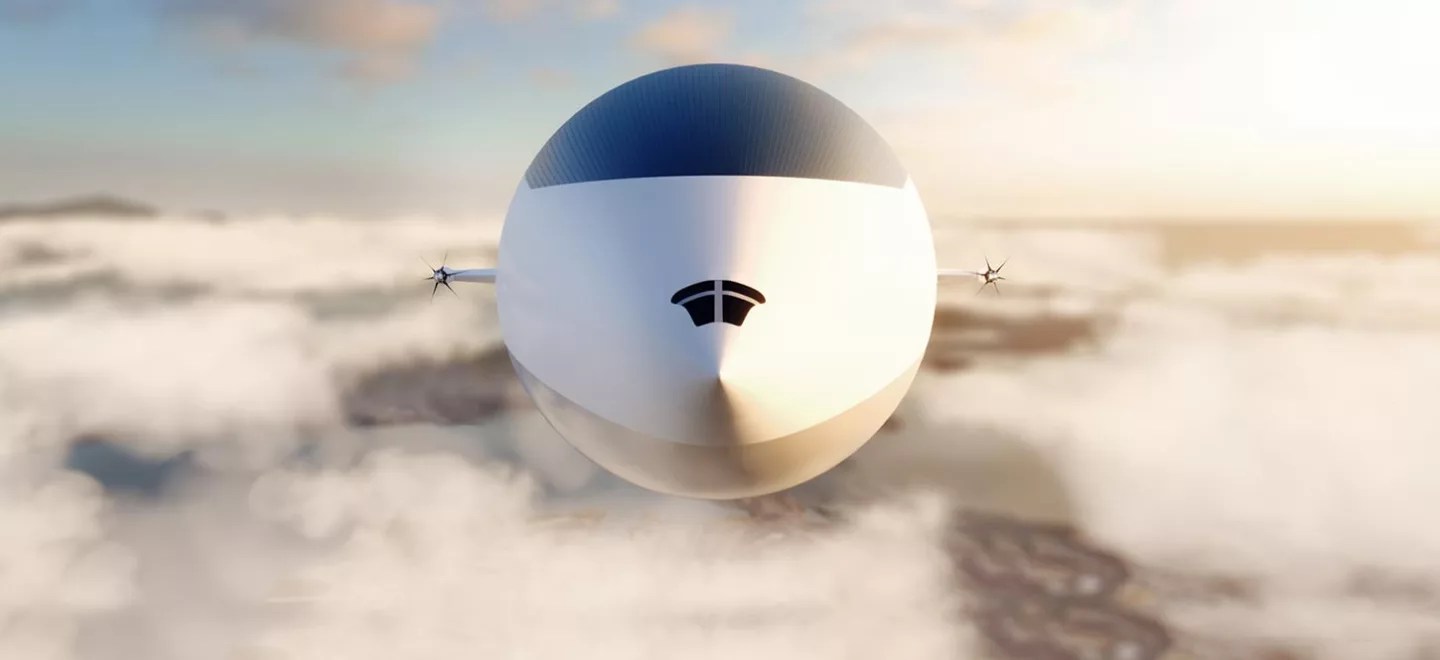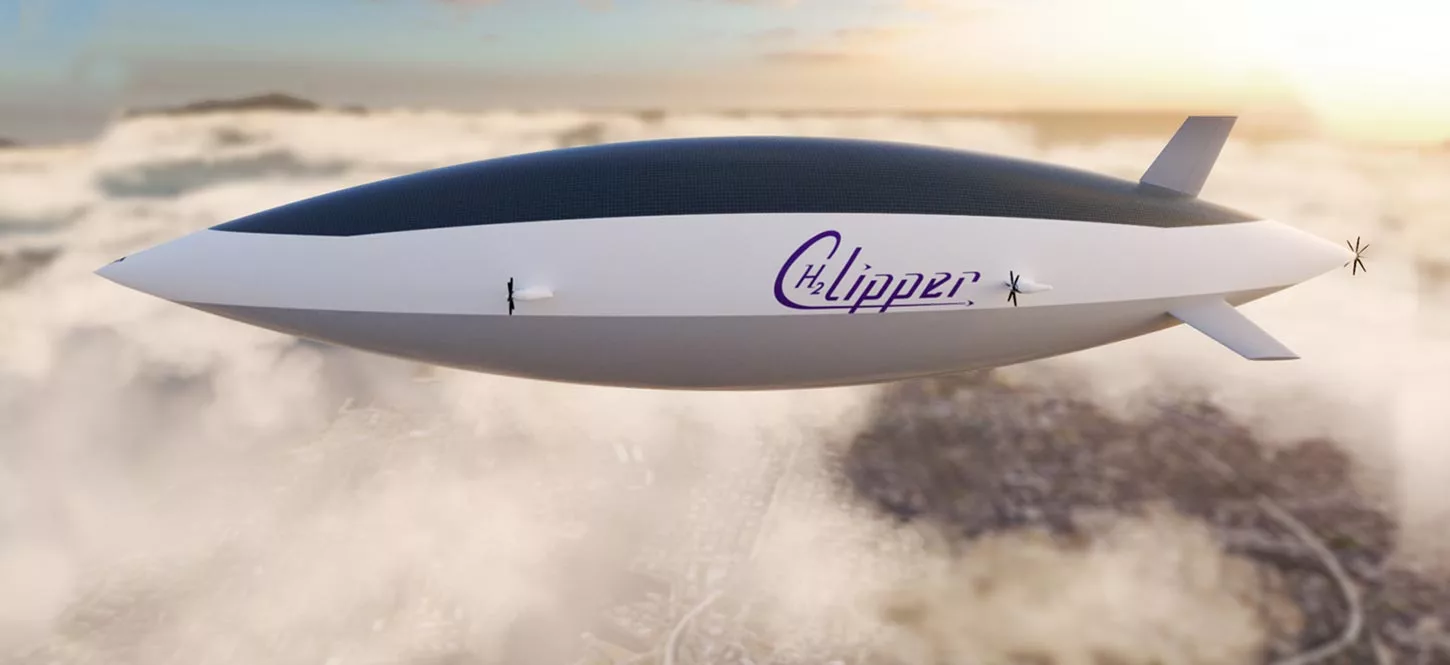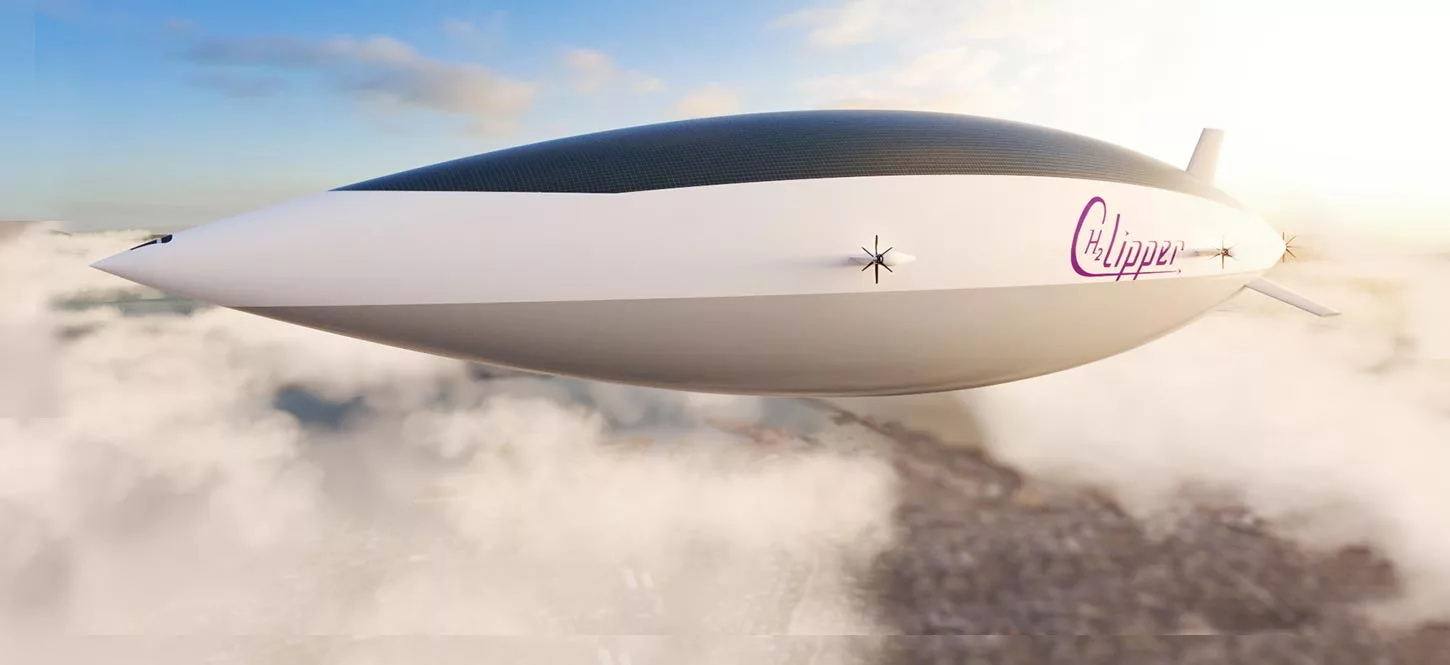H2 Clipper presents a very compelling case to bring back an extremely controversial technology, saying that large electric airships lifted and powered by green hydrogen stand ready to transport massive cargo loads over enormous distances much faster than cargo ships, opening up inland logistics facilities with minimal ground infrastructure, and doing it all with zero emissions.
We're talking cargo loads up to 340,000 lb (150,000 kg – or the equivalent of about 115 Toyota Corollas), distances up to 6,000 miles (9,650 km, or roughly the distance between Los Angeles and Barcelona), at cruising speeds over 175 mph (280 km/h, or a little under one-third the speed of a Dreamliner passenger plane – but 7-10 times faster than a cargo ship can go).
That's an incredibly compelling set of numbers, particularly given the cost; H2 Clipper claims it'll cost a quarter of what today's air freight services cost per ton-mile, making it an economically disruptive way to move bulk cargo as well as an opportunity to decarbonize trans-continental logistics operations.
Hydrogen airships have a bit of a reputation, of course, thanks to the tragic and compelling footage of the Hindenburg disaster in 1937. But as we discussed when we first profiled H2 Clipper's technology, there are many reasons why people may have taken the wrong message away from that incident, including some pretty heinous skullduggery from helium lobbyists.

As momentum gathers behind hydrogen as a next-generation clean aviation fuel, there's a compelling case to question why it can't also be used as a cheap, green lift gas as well, to open up these kinds of clean cargo transport possibilities with minimal, if any, risk to human life.
In 2021, H2 Clipper was accepted into Dassault Systems' 3D Experience lab accelerator program, giving this small company the ability to use cutting-edge simulation and development tools to refine its design. The company has completed simulated wind tunnel tests using computational fluid dynamics (CFD), validating its super-low drag aerodynamics and putting some weight behind the company's fuel burn and operational cost estimations.

At this stage, the company plans to get a prototype built by 2025, and to have a full-sized hydrogen airship flying in 2028. It's still a risky play for investors; the FAA currently bans hydrogen as a lift gas. But green hydrogen projects worth billions of dollars are springing up across the globe, so hydrogen itself stands to have a lobby group behind it like it's never had before.
In that context, one interesting use case for hydrogen airships is to move green hydrogen itself; H2 Clipper says that these aircraft will beat rail, trucks, ships and even pipelines on price for hydrogen exports moving any distance over 1,000 miles (1,600 km). These "pipelines in the sky" will also be as green as the bulk hydrogen they're shifting, adding a further benefit that green H2 exporters might be willing to take some risks betting on.
You can check out H2 Clipper's 20-minute presentation at the First International Hydrogen Aviation Conference in September 2020 in the video below.
Source: H2 Clipper










